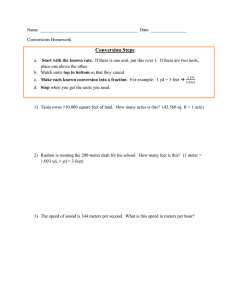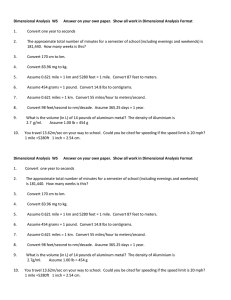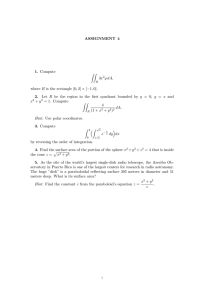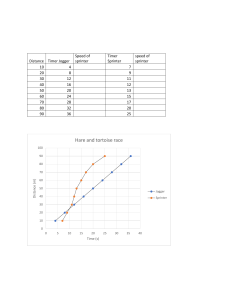10.05 m / s 10.05 m 1 s 60 sec 1 min 60 min 1 hour 1 km 1000 m
advertisement
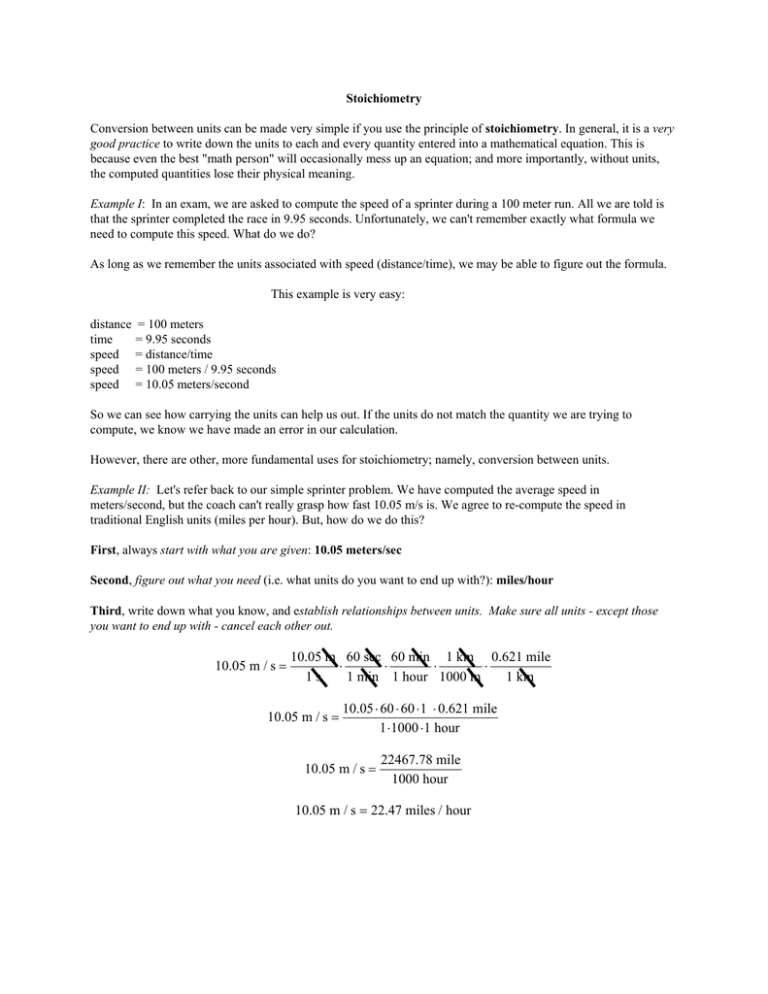
Stoichiometry Conversion between units can be made very simple if you use the principle of stoichiometry. In general, it is a very good practice to write down the units to each and every quantity entered into a mathematical equation. This is because even the best "math person" will occasionally mess up an equation; and more importantly, without units, the computed quantities lose their physical meaning. Example I: In an exam, we are asked to compute the speed of a sprinter during a 100 meter run. All we are told is that the sprinter completed the race in 9.95 seconds. Unfortunately, we can't remember exactly what formula we need to compute this speed. What do we do? As long as we remember the units associated with speed (distance/time), we may be able to figure out the formula. This example is very easy: distance time speed speed speed = 100 meters = 9.95 seconds = distance/time = 100 meters / 9.95 seconds = 10.05 meters/second So we can see how carrying the units can help us out. If the units do not match the quantity we are trying to compute, we know we have made an error in our calculation. However, there are other, more fundamental uses for stoichiometry; namely, conversion between units. Example II: Let's refer back to our simple sprinter problem. We have computed the average speed in meters/second, but the coach can't really grasp how fast 10.05 m/s is. We agree to re-compute the speed in traditional English units (miles per hour). But, how do we do this? First, always start with what you are given: 10.05 meters/sec Second, figure out what you need (i.e. what units do you want to end up with?): miles/hour Third, write down what you know, and establish relationships between units. Make sure all units - except those you want to end up with - cancel each other out. 10.05 m / s = 10.05 m 60 sec 60 min 1 km 0.621 mile ⋅ ⋅ ⋅ ⋅ 1s 1 min 1 hour 1000 m 1 km 10.05 m / s = 10.05 ⋅ 60 ⋅ 60 ⋅ 1 ⋅ 0.621 mile 1 ⋅1000 ⋅1 hour 10.05 m / s = 22467.78 mile 1000 hour 10.05 m / s = 22.47 miles / hour For this class, you should to have knowledge of the metric (decimal) system conversion factors. Multiplication Factor SI Prefix SI Symbol 1,000,000 = 106 mega M 1,000 = 103 kilo k 100 = 102 hecto h 10 = 101 deka da .1 = 10-1 deci d .01 = 10-2 centi c .001 = 10-3 milli m .000001 = 10-6 micro µ Table 1. SI multiplication factors and prefixes A brief list of commonly used conversion factors is provided below. For further information, refer to Carter, D.R. (1989). SI: The international system of units. In Nordin & Frankel, Basic Biomechanics of the Musculoskeletal System, Philadelphia: Lea & Fibinger, pp. xvii-xxiii. 360 degree = 1 revolution = 6.283 radians 1 inch = 2.54 cm 1 foot = 0.3048 m 1 yard = 0.9144 m 1 mile = 1609 m 1 lb. = 4.448 N

